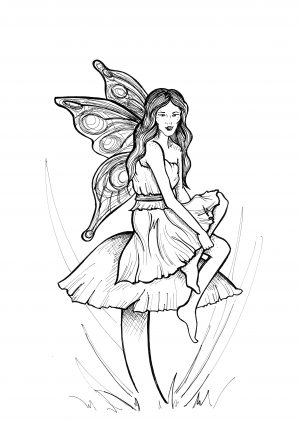 Faeries as a personification of nature
Faeries as a personification of nature
Originally published in inSpirit magazine.
Whether you believe that faeries are real or imagined, their beauty touches the heart, sparks joy within, and inspires us to protect nature and the natural world.
Since my collaboration with a friend on The Book of Faery Magic, I’ve been asked several times, in tones ranging from politely curious to downright rude, how I could write a book about faeries when I don’t believe they physically exist. Some people have also been shocked that I would publicly admit such a thing, which makes me smile, for among much of society it’s considered strange to believe that faeries do exist.
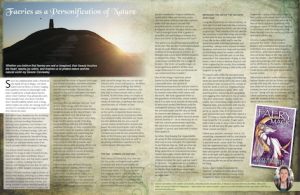 But others have thanked me for vocalising this perspective, because they too love the fae, and surrounding themselves with pictures, jewellery and clothes that evoke them, yet they aren’t comfortable with the idea of winged beings, and can’t believe they really exist. The imagination is a powerful, wonderful, beautiful thing, bringing richness and wonder to our lives, and we can still love faeries even if we don’t consider them real physical beings.
But others have thanked me for vocalising this perspective, because they too love the fae, and surrounding themselves with pictures, jewellery and clothes that evoke them, yet they aren’t comfortable with the idea of winged beings, and can’t believe they really exist. The imagination is a powerful, wonderful, beautiful thing, bringing richness and wonder to our lives, and we can still love faeries even if we don’t consider them real physical beings.
I’ve always loved faeries. As a child I adored the magical tales I found in books, the puffy tulle skirts and flower tiaras I wore to ballet class, and the hours I spent outside in nature, building tiny faery houses and hoping that one day I’d catch a glimpse of a little winged creature within.
Today I still love reading magical stories of enchanted realms, dressing as a faery now and then, hanging paintings of the fae on my walls to inspire me when I write, and being outside in nature feeling myself as a part of the earth. I love the imagery, the legends and the sense of beauty and magic that faeries symbolise, and their reminder to be playful, light of heart and in love with the environment. The very idea of them lifts the spirits, and opens the heart and the mind to the potential of living a magical life.
And regardless of whether they are “real” or not, their energy exists because we want it to, because we have created them and given power to the idea of them – we have made them real. We know what they look like, what they want, what they hope for the human world. They leap out of paintings with joy and child-like abandon (although, as they represent the era in which they are painted, there are often darker faeries too, expressing the world’s fears through the ages, of war, industrialisation, nuclear devastation). They come to vivid life in movies and television shows with amazing effects and messages of magic, and they twist their way into our hearts in stories brimming with imagination and enchantment, books that hold truths about life despite being fiction.
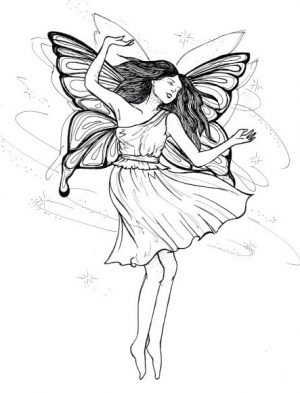 Faeries mean such different things to different people anyway, which is part of what makes them so magical and mysterious, and also what makes it a moot point whether we “believe” or not. For what definition of the fae should we believe? To some people faeries are actual physical beings, supernatural creatures with colourful wings that we can see and interact with, touch and speak to. To others they are not physical beings but etheric ones, existing in another dimension, and only able to communicate with us mind-to-mind. To still others they are simply an energy, a shimmer of sparkling light in the corner of their eye, or perhaps the soul or consciousness of a flower or tree.
Faeries mean such different things to different people anyway, which is part of what makes them so magical and mysterious, and also what makes it a moot point whether we “believe” or not. For what definition of the fae should we believe? To some people faeries are actual physical beings, supernatural creatures with colourful wings that we can see and interact with, touch and speak to. To others they are not physical beings but etheric ones, existing in another dimension, and only able to communicate with us mind-to-mind. To still others they are simply an energy, a shimmer of sparkling light in the corner of their eye, or perhaps the soul or consciousness of a flower or tree.
For other people, faeries come to them as the spirits of departed loved ones or ancestors, more heart-centred sensation than physical reality. And there are those too who believe the fae are a race of ancient deities diminished in stature and power by more recent gods, such as the goddess Maeve’s transformation in the Christian era to the far less powerful faery Mab, or the trickster god Loki being reborn as the mischievous imp Puck (as well as becoming a villainous superhero in the current Marvel film franchise).
The fae – symbol of nature
Then there are those, like me, who see the fae as the anthropomorphication of nature, our way of humanising the environment around us and understanding it in human terms. It’s so easy to feel the magic of nature – and imagine fae beings – in the faery glens and faery hills of Ireland, at Findhorn in Scotland, the sacred springs of England, the enchanted forest of Broceliande in France, in ancient woodlands, tropical rainforests, undisturbed lakes and streams, moss-covered stones and ivy-clad oaks, national parks and vast deserts all over this beautiful planet, as well as in our own backyards. As writer Douglas Adams says: “Isn’t it enough to see that a garden is beautiful, without having to believe that there are fairies at the bottom of it too?”
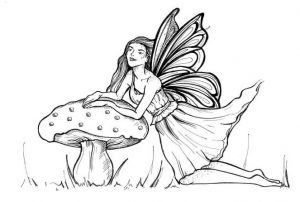 This world is so breathtakingly beautiful all on its own that we don’t need supernatural beings to make flowers grow, colour a rainbow or bring beauty to a forest. As biologist and nature lover Richard Dawkins so eloquently states: “The real world, as understood scientifically, has a magic of its own – the kind I call poetic magic; an inspiring beauty which is all the more magical because it is real and because we can understand how it works.”
This world is so breathtakingly beautiful all on its own that we don’t need supernatural beings to make flowers grow, colour a rainbow or bring beauty to a forest. As biologist and nature lover Richard Dawkins so eloquently states: “The real world, as understood scientifically, has a magic of its own – the kind I call poetic magic; an inspiring beauty which is all the more magical because it is real and because we can understand how it works.”
One of the things I most love about faeries is that we have made them a personification and symbol of environmental protection and our need to love and protect our world, and a reminder to connect more often with nature and the earth. We have appointed them as the guardians of the earth, and of nature, but it is us who must actually do the work, us who must protect the forests and the endangered animals, the life-giving land, the precious water and the very air itself, to conserve our resources, care for the planet, and speak out when those in power seek to destroy it – oh so necessary for us with our current government especially. We must live in harmony with nature, consider it sacred, and work with it rather than against it.
So rather than leaving the responsibility of caring for the environment to creatures that may or may not exist, it’s important to me that we step up. That we clean up the beaches, parks and forests, that we bring awareness to environmental issues, reduce our usage, recycle what we can, raise money for eco causes, teach our children to value the earth and not take it for granted. That when we see a problem in the world, we take steps to address it, no matter how small those steps might seem or what form the issues that concern us might take
Bringing the joy of the fae into our lives
Living life inspired by our idea of faeries, of their light-hearted and child-like innocence and way of seeing the world, can also bring us great joy. They remind us to not take life too seriously, to not take things personally, to find time to play, to remember what it was like to be a child, and to see the world filled with unlimited potential and possibility. I always seem to have a million deadlines and work too long and too hard, so reminding myself to connect with my inner faery, the child-like part of me that remembers the importance of play, is vital to me. I don’t have to believe they are real to be inspired by the energy they embody, to remind myself to bring a little levity and laughter to my life.
It’s easy to add a little fae energy to your life – you can start by simply remembering what you loved doing when you were a kid, and doing it now. Go play on the swings or feed the ducks (I visit our neighbourhood ducks and swamp hens quite often, and watching them swimming and squawking and wiggling their bottoms in the air when they dive underwater always makes me smile). Get a hula hoop, some elastics or a skipping rope, and reconnect with the joy of movement. Fly a kite, have a costume party, or spend a day at an amusement park and nurture your inner child. Watch a kids’ TV show or movie without feeling you have to justify it to anyone. Finger paint, bake a faery cake or wear a faery dress to work. (It will not only lift your spirits, but those around you too.)
Follow your passion, whatever that is. Do something unexpected and fun and playful and wild, and start to tune in to what it is you love to do, rather than the things that are expected of you. This is not about shirking responsibility or running away from your grown-up life, but simply finding time to be light and happy, to connect to your joyful heart and remember to enjoy this amazing life we are all so blessed to be living.
So no, I don’t think it’s essential to “believe” in faeries to write about them, to invoke the light-hearted energy we’ve assigned to them or to channel their inspiration – many of the most amazing faery artists and authors don’t think they physically exist, but are enchanted by the idea of them, and love to embody their energy on canvas or on the page, helping us all connect with the inspiration that flows through from the myths and legends and stories of the fae.
Likewise many of those working to preserve the earth – from wisdom keepers and environmental groups to the individuals who protest about logging, plant trees, write about global warming and sail pirate ships on the high seas to save the whales – don’t believe in literal supernatural beings, but take on the role we’ve attributed to the faeries, turning the passion, wisdom and eco awareness we credit faeries with into real and powerful human action.
Ultimately it doesn’t matter whether you believe faeries are fact or fiction, but what you do with your life, how much magic you allow into it, and whether your actions embody the best of what we attribute to the fae – living with joy and wonder, having a kind and loving heart, maintaining a child-like wonder at the world, and caring about nature and the earth.
Serene Conneeley is the author of six books, including Seven Sacred Sites, A Magical Journey and Into the Mists. She’s the editor of several children’s magazines – which gives her reason to play – and is currently working on her next novel. Visit her at SereneConneeley.com.
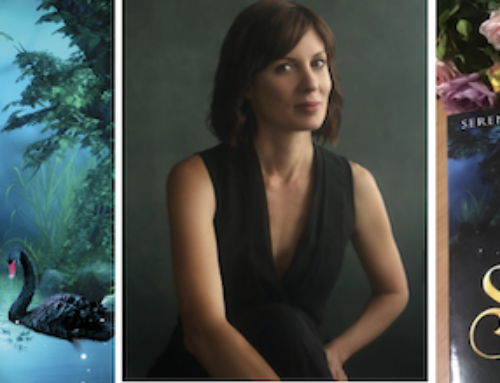
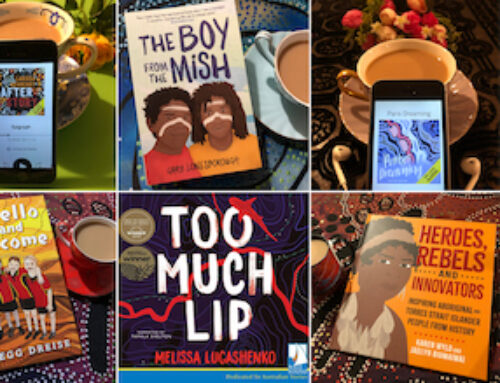
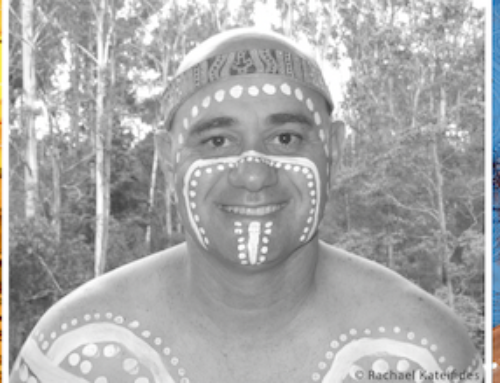
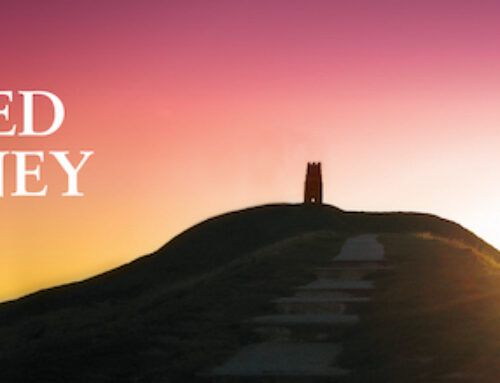
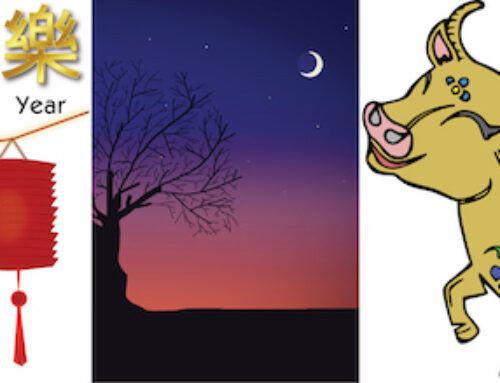


Get Social